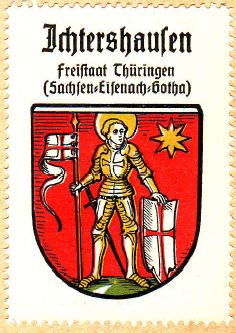
The name Christin was chosen in 1530 at the baptism of a Jewish maiden in the way described in this letter from Martin Luther to his friend, Heinrich Gnesius:
Grace and Peace in Christ to you, dear Brother Heinrich Gnesius, true servant of the church in Ichtershausen and one worthy of God’s Love.
I am in agreement with you, dear Heinrich, that the Jewish maiden should be baptized in such a way that we use our Baptismal Immersion Tub with cloths which we call a Bath Towel.
It would please me that she should sit in a spacious tub, covered with a bath sheet/towel, and be traditionally dowsed with water—or that her head be dunked thrice if she sits in the water up to her neck and is clad in the towels.
Yes, I should wish that this tub be hidden behind hanging carpets, just as they are customarily enshrouded at home.
I believe that it is an ancient yet still current custom in church that children, who are now generally baptized unclothed, use a linen caul (long linen shirt or shift) as they once were in days of yore. Hence, Quasomodegeniti Sunday is still called “Dominica in Albis” (White Sunday), as the baptized child would have worn white the entire week after his baptism.
It is not credible that the lineage of the Jews would not have had such good practices and that Christ Himself would have baptized adults naked. We even shroud the dead in a similar cloth in remembrance of our Baptism; in which we are baptized into Christ’s death, so that in Baptism and in Death the Resurrection of the Dead is announced.
See that the maiden is not just feigning faith in Jesus Christ. The Jews (“this lineage of people”) can devise the most amazing things — not that I would doubt that there remain of the Line of Abraham (Romans 11:5) those who belong to Christ, but rather that the Jews even today have played with our faith in a number of ways. Admonish her whether she is deluding herself as she would then be unhappy. If she truly believes, I wish her grace and steadfastness. You may greet her in my name and assure her of my task of love.
Live well in the Lord. From the desert of solitude, 9 July 1530, your Martin Luther
Translated 30 January 2016 from the German by J (Johannes) Froebel Parker 11th great grandson of Christin Froebel, nee Mandel
Martin Luther uses the informal and familiar “Du” form of “You”, because they are friends of standing. Heinrich was the pastor of the church at Ichtershausen, which had been part a convent for nuns.

Christin Mandel married Volckmar Froben(ius), younger brother of Johannes Froben. Two of their sons became Lutheran pastors adopting Froebel as their family name. As a widow Christin Froebel was a guest of the Counts of Gleichen. She died in 1602.
Mädchen usually means a young unmarried woman and may also refer to a servant, or an older woman who has never married. Many stories collected by the Grimm brothers begin, Es war einmal ein kleines Mädchen, dem war Vater und Mutter gestorben, Once upon a time a little girl, whose father and mother had died.
Martin Luther was writing from the fortress in Coburg, where he sought refuge because he was under an imperial ban at the time. He was continuing his work translating the Bible into the language of the people

From April to October 1530, the Diet of Augsburg attempted to calm rising tensions about Luther, because Charles V wanted Christianity to unite against the rising Ottoman threat. Under Suleiman, the Ottomans had almost taken Vienna in 1529. The Augsburg Confession, a central document of Lutheranism, was presented to emperor Charles V.
After his victory over the Schmalkaldic League, the attempt of Charles V to give Catholicism priority was rejected by many princes. A resolution of these confessional tensions was achieved in 1555, where the Peace of Augsburg acknowledged the Augsburg Confession and codified the principle of cuios regio, eius religio, which gave each prince the power to decide the religion of his subjects.
Gnade und Friede in Christo dem lieben Bruder Heinrich Gnesius, dem getreuen Diener der Kirche in Ichtershausen und in Gott Liebenswerten.
Ich stimme mir dir überein, lieber Heinrich, dass das jüdische Mädchen getauft werden soll nach der Art, wie wir sie bei unseren Taufbädern nutzen, mit Tüchern, die wir Badtuch nennen. So würde es mir gefallen, dass sie, in einem geräumigen, mit Wasser gefüllten Gefäß sitzend, mit einem Tauftuch bedeckt, sittsam übergossen werde – oder dass ihr Haupt, wenn sie mit denselben Tüchern bekleidet bis zum Hals im Wasser sitzt, durch dreimalige Eintauchung untergetaucht werde. Ja, ich wollte, dass dieses Gefäß selbst durch ringsherum aufgehängte Teppiche verborgen würde, so wie die häuslichen Badegefäße verhüllt zu werden pflegen.
Ich glaube, dass es ein alter, in der Kirche aber übrig gebliebener Brauch ist, dass wir den Kindern, die jetzt nackt getauft werden, auch ein solches Leinentuch anziehen, das wir Westerhemd nennen – da ja einstmals alle Christen in einem derartigen Kleid getauft sind, woher jener (Sonntag) Quasomodegeniti bis heute “Dominica in albis” (Weißer Sonntag) genannt wird, da sie ja jenes Kleid von der Taufe an während jeder ganzen Woche getragen haben.
Es ist nicht glaubhaft, dass das Geschlecht der Juden nicht so gute Ordnungen gehabt hätte und das Christen selbst Erwachsene nackt getauft hätten. Dazu kommt, dass wir auch den Toten ein solches Gewand anziehen zum Gedächtnis unserer Taufe, in der wir in den Tod Christi getauft werden, damit in der Taufe und im Tode die Auferstehung von den Toten angezeigt werde.
Achte aber darauf, dass jenes Mädchen den Glauben an Jesus Christus nicht nur vorgibt. Dies Geschlecht von Menschen ersinnt nämlich Erstaunliches – nicht, als ob ich bezweifeln würde, dass übrig gebliebene Abrahame (Röm, 11, 5) noch vorhanden sind, welche zu Christus gehören, sondern weil die Juden bis heute verschiedentlich mit unserem Glauben ihr Spiel getrieben haben. Ermahne sie daher, dass sie sich nicht täuscht und alsdann unglücklich wird. Wenn sie wahrhaftig ist, wünsche ich ihr Gnade und Standhaftigkeit. Du mögest sie in meinem Namen grüßen und ihr mein Amt der Liebe zusagen.
Lebe wohl im Herrn! Aus der Einöde, 9. Juli 1530 – Dein Martinus Luther